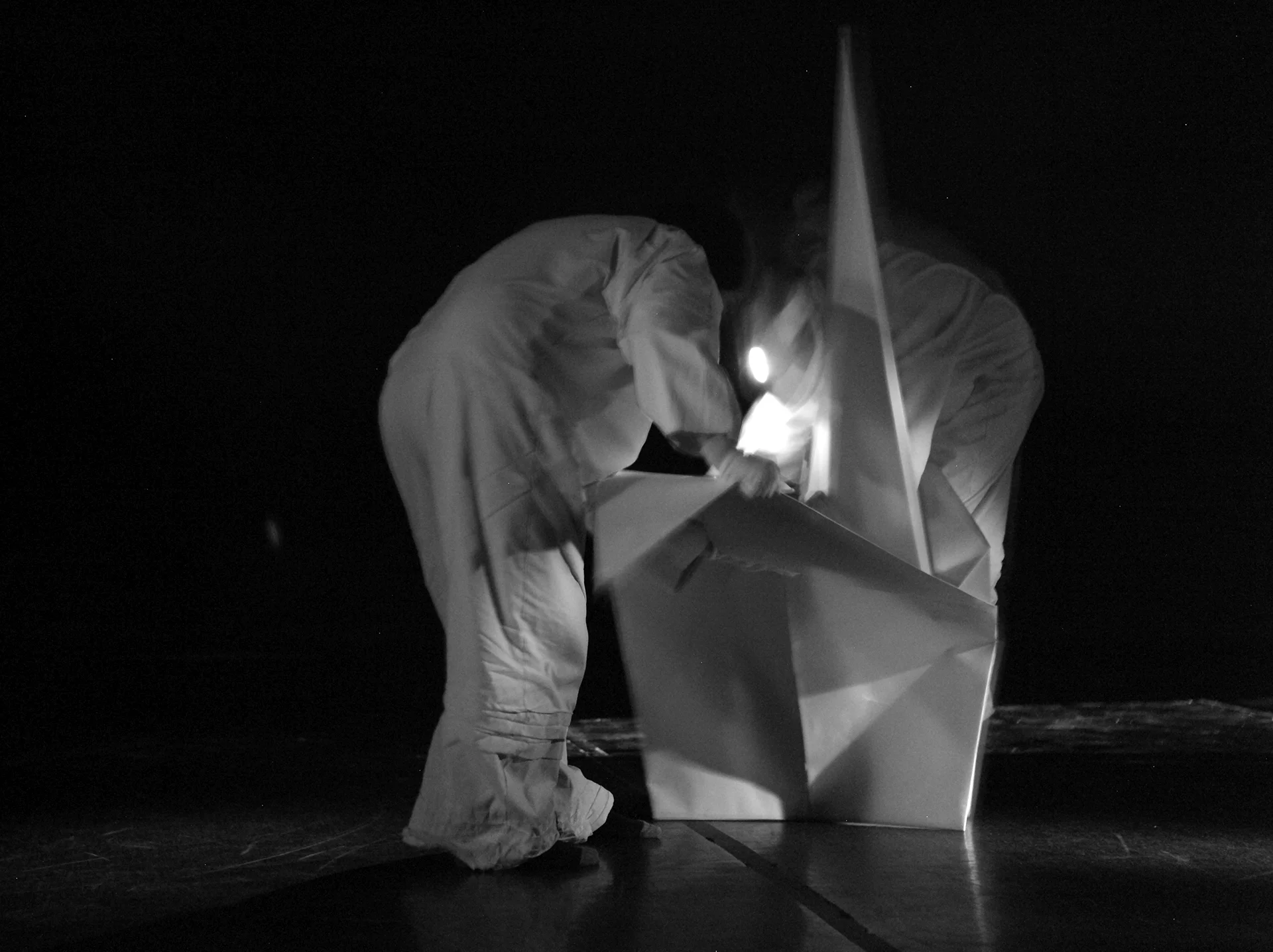Lessons for astronauts
Lessons for astronauts, QL2 Dance studio, Gorman House, Canberra 2013
Performance initiated by Ellis Hutch and devised in collaboration with Steven Holland, Caroline Huf and Amy Fiveash
Video documentation: https://vimeo.com/73135407
Over a few short sessions four artists met and explored a series of stories. This project, devised by Ellis Hutch was an experiment in using a series of starting points to generate a collaborative performance event.
One of the starting points was grainy footage of Buzz Aldrin ‘kangaroo hopping’ on the surface of the moon conducting a mobility experiment.
It was played over and over in the performance space while myself (Ellis) and the three other performers (Caroline Huf, Steven Holland and Amy Fiveash) explored ideas and approaches, we responded to it through movement, through conversation, storytelling and questioning. We moved the footage around in the space, experimented with light and shadow and mapped and formed a relationship with the studio space.
A second element came into the work through the story telling process as I told the group a story relating to methods for astronaut candidate selection.
It was a story reported by Mary Roach, (Packing for Mars: The curious science of life in the void) a journalist who visited space research centres around the world asking the question what would it take to get to Mars?
In Japan she observed astronaut candidates undergoing psychological testing to assess their suitability for life on the space station.
The astronauts were put into a sealed/isolated environment they shared with other candidates and where they remained for a period under the observation of psychologists and mission staff. They were observed for their social habits, how they coped with stress and their skills undertaking certain tasks.
One of the tasks they performed was to fold 1000 paper cranes. There are specific reasons for this activity – the astronauts are given a deadline – they need to demonstrate their ability to maintain their manual dexterity and focus under pressure while completing a boring and repetitive task. As they make the cranes they attach them to a thread – this way the assessors can have a chronological measure of their performance, see how their work holds up over time – if they maintain the quality and are able to continue to work at a certain speed.
What appeals to me about the crane story is that it is a form of practice that does not simulate an actual process that would occur in outer space. But it approximates the emotional and physical skills required to operate in space – it is practical and poetic – scientific, aesthetic, useless and useful.
In lessons for astronauts two performers fold a paper crane from a piece of paper that is 3 meters square.
Enacting this process of folding an oversize crane does not work to simulate an astronaut’s experience but extrapolates on the story to take the audience into another realm. In the performance two individuals have to negotiate the manipulation of a large piece of paper to collaboratively build this object. The duration of the folding determines the duration of the performance itself.
Another two performers – mirror each other’s movements – alternately tracking through the space and shining a spotlight on each other’s actions. They do not actively engage with the first performers – inhabiting the same physical space but appearing to be somewhere else in time/space as well.
#ellishutch
#art
#performanceart
#cbrartist

Lessons for astronauts









